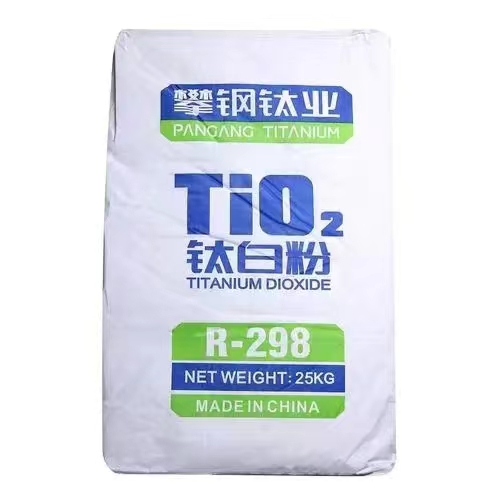
Dec . 31, 2024 05:16 Back to list
25% Tio2 Supplier Options for Your Production Needs and Quality Assurance
Understanding P25 TiO2 A Comprehensive Guide for Suppliers
In recent years, the demand for high-performance photocatalytic materials has seen a significant rise. One of the most sought-after products in this category is P25 titanium dioxide (TiO2). This versatile and effective photocatalyst plays a crucial role in various applications, ranging from environmental remediation to self-cleaning surfaces. In this article, we will delve into the essential aspects of P25 TiO2, its properties, applications, and considerations for suppliers in the market.
What is P25 TiO2?
P25 TiO2 is a commercial grade of titanium dioxide that is specifically engineered for photocatalytic applications. Produced by Evonik Industries, this material is a fine powder that consists primarily of anatase and rutile phases, which are different crystal structures of titanium dioxide. The P25 form consists of approximately 70% anatase and 30% rutile, offering a unique combination of properties that enhance its photocatalytic efficiency.
One of the defining features of P25 TiO2 is its high surface area, which facilitates the absorption of light and enhances the rate of photochemical reactions. With a particle size typically around 30-50 nanometers, P25 TiO2 exhibits excellent dispersion in various media, contributing to its effectiveness in applications where efficient light absorption and catalytic activity are essential.
Properties of P25 TiO2
The properties that make P25 TiO2 highly effective include
1. Photocatalytic Activity P25 is known for its exceptional photocatalytic performance under ultraviolet (UV) light. It can effectively degrade organic pollutants, bacteria, and viruses, making it ideal for applications in water and air purification.
2. Non-toxic Nature Being a naturally occurring mineral, titanium dioxide is safe for use in various applications, including those related to food, cosmetics, and pharmaceuticals. This non-toxic characteristic encourages broader adoption in different industries.
3. Durability P25 TiO2 is chemically stable and does not deteriorate over time, ensuring long-lasting performance in applications such as coatings and environmental cleaning.
4. Versatility Due to its unique physical and chemical properties, P25 TiO2 can be used in a diverse range of applications, including paints, coatings, composites, and catalysts.
Applications of P25 TiO2
The applications of P25 TiO2 are extensive, and understanding these can guide suppliers in targeting specific markets
p25 tio2 supplier

1. Environmental Purification P25 TiO2 serves an essential role in photocatalytic air and water purification systems. It helps eliminate volatile organic compounds (VOCs), bacteria, and other harmful substances when exposed to UV light. This property is particularly valuable in addressing industrial pollution and promoting sustainable practices.
2. Self-cleaning Surfaces The incorporation of P25 TiO2 into building materials and coatings leads to self-cleaning surfaces. When exposed to sunlight, the photocatalyst breaks down organic stains and helps keep surfaces clean, significantly reducing maintenance costs.
3. Solar Energy Conversion P25 TiO2 is also being explored for its potential in solar energy applications, particularly in dye-sensitized solar cells (DSSCs). Its ability to absorb light and generate energy opens new avenues in renewable energy research.
4. Cosmetic and Personal Care Products Due to its safe and non-toxic nature, P25 TiO2 is commonly found in sunscreens and cosmetic products. It acts as a UV filter, providing effective protection against harmful sun exposure.
Considerations for Suppliers
For suppliers of P25 TiO2, it is crucial to consider several factors to remain competitive in the burgeoning market
1. Quality Assurance Ensuring a consistent quality of P25 TiO2 is vital for maintaining customer trust and satisfaction. Regular quality checks and certifications can establish credibility and reliability.
2. Research and Development Staying updated with the latest advancements in photocatalytic technology is essential. Investing in research and development can lead to improved formulations and applications of TiO2.
3. Sustainability As industries worldwide strive for sustainability, suppliers should focus on eco-friendly production methods. Highlighting sustainable practices can be a significant selling point.
4. Market Trends Understanding evolving market demands and being adaptable to changing consumer needs will help suppliers remain relevant and competitive.
Conclusion
P25 TiO2 stands out as a powerful photocatalyst with vast applications across various industries. For suppliers, understanding its properties, applications, and market dynamics is essential to harness its potential fully. By focusing on quality, sustainability, and innovation, suppliers can capture the market and contribute to a cleaner, more sustainable environment. As we move forward, the importance of materials like P25 TiO2 will only grow, making it an exciting area for exploration and investment.
-
Premium 6618 Titanium Dioxide for GPT-4 Turbo Applications
NewsJul.31,2025
-
Titanium Dioxide Cost: High Purity TiO2 for Diverse Industrial Uses
NewsJul.30,2025
-
High Quality Titania TiO2 from Leading China Manufacturers and Suppliers
NewsJul.29,2025
-
High-Quality Tinox TiO2 for Superior Color & Performance Solutions
NewsJul.29,2025
-
High Quality Titania TiO2 from Leading China Supplier & Manufacturer
NewsJul.29,2025
-
High-Performance r6618 TiO2 for Superior Whitening and Versatility
NewsJul.28,2025
